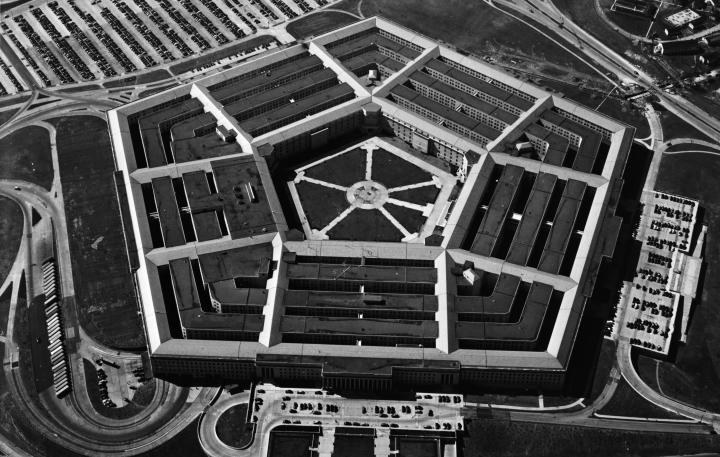
Since President Trump began his second term, the US government has increasingly taken stakes in companies considered strategically important for national security. Investors are worried about what this means for market efficiency, but in the short term they are profiting from rising stock prices.
JP Morgan, the largest bank in the United States, announced last week that it will invest 10 billion dollars in sectors deemed crucial for national security. The investment is part of the bank’s ten-year plan to allocate 1,500 billion dollars to defense, energy, and manufacturing. According to CEO Jamie Dimon, the initiative is “entirely commercial and not philanthropic.”
The bank appears to be following the government’s example. Since the start of the year, the US government has repeatedly announced new investments in national security. In July, for instance, the Pentagon revealed plans to invest 400 million dollars in rare-earth producer MP Materials, and in August President Donald Trump stated via Truth Social that the US government had acquired a 10 percent stake in Intel Corporation to safeguard national security. Intel’s share price surged after Trump’s announcement and continues to rise. MP Materials’ stock is up 400 percent since January.
‘Alarming’ trends
Not everyone is at ease with the government’s growing presence in financial markets. “It’s not shocking in itself if the government takes a 10 percent stake in a company,” said investment consultant Arent Thijsen of InvestIQ. “But under Trump’s policy, the concentration of power is taking on alarming proportions. You can also see companies increasingly adapting to the whims of the government.”
According to Lucas Crasborn, head of investments at Optimix, the state’s interference stems from the changing geopolitical landscape. “Deglobalization and national security have become the new trend toward militarization,” he said. “That’s not a cheerful development. Capital would be better spent on social or technological progress.”
Crasborn stressed that the government’s role should ideally be to create favorable conditions for businesses, not to intervene directly. “The state should provide a climate in which enterprises can flourish, rather than taking on the role of investor itself,” he said, adding wryly: “Besides, the government doesn’t exactly have a stellar track record as an asset allocator.”
Still, the new dynamic also presents opportunities for investors. Crasborn’s colleague, senior portfolio manager Arjen van der Meer, sees potential for those who are alert to shifting geopolitical movements. “You can anticipate short-term fluctuations by taking positions early,” he said. “The upside potential is often large, while the downside risk remains limited.”
Price spikes
Optimix, for example, took an early position in MP Materials after an external consultant alerted the asset manager to developments at the Department of Defense. On July 10, 2025, the US Department of Defense announced a 400 million dollar investment in the rare-earth producer, equivalent to a 15 percent stake—making it the largest shareholder. The company’s stock jumped about 50 percent that day.
Similar price movements occurred at other companies labeled strategic by Washington. Lithium Americas surged nearly 100 percent after the government announced a 10 percent stake, while Trilogy Metals gained more than 200 percent. Commenting on these examples, and on Intel, Van der Meer said: “Government guarantees, such as minimum prices for certain rare metals, create a market floor that investors are eager to take advantage of. It clearly boosts market sentiment.”
Market distortion ahead
Those same guarantees have a downside, Thijsen warned. The risk, he says, is that companies begin positioning themselves strategically to align with policy priorities. “The likelihood of bankruptcy decreases when the government becomes a partner, but that disrupts natural risk dynamics.”
Crasborn shares that concern. “Overinvestment and capital destruction loom when political goals outweigh financial returns. A political agenda often comes with conditions that aren’t necessarily in the company’s best interest,” he said.
He added that the focus keeps shifting. “First, ESG was the magic word, now it’s defense. Next it’ll be copper, needed to modernize the power grid. Investors follow that trend, whether they want to or not.”
Between opportunity and concern
“Governments taking an active role in markets isn’t new,” said Thijsen, “but the scale and political undertone are now greater. The sums involved also pale compared to private deals, such as the roughly 300 billion dollar agreement under which Oracle provides cloud capacity to OpenAI.”
Crasborn concedes that in some industries, a helping hand is inevitable. “Certain sectors, like lithium, are simply hard to make fully commercially viable,” he said. “In such cases, government support is justified—as long as it doesn’t turn into structural dependency.”
“As investors, we need to look at this soberly,” Van der Meer added. “It’s not up to us to judge whether it’s good or bad, but to stay alert to the consequences for market movements.”